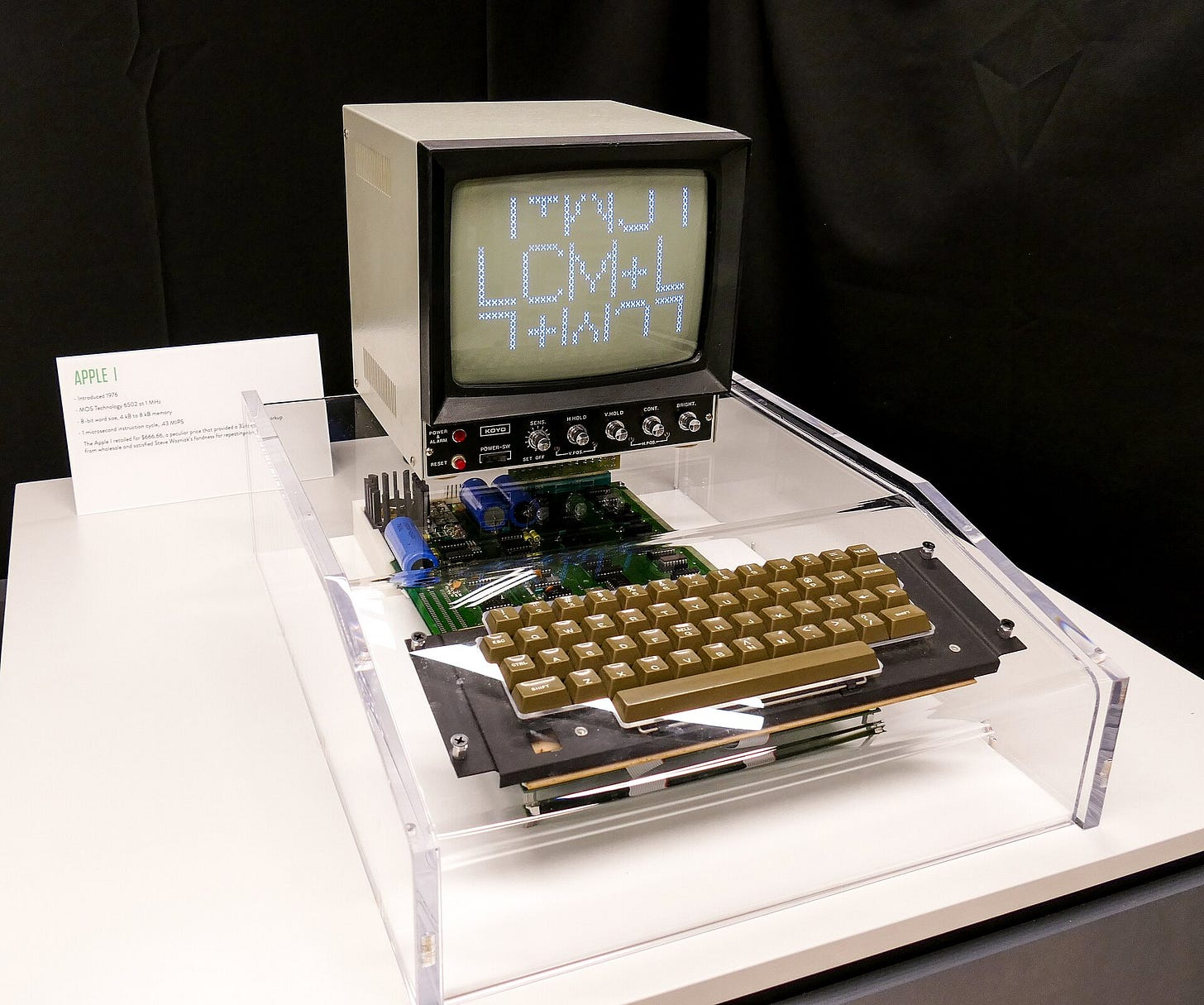Apple I Computer by Steve Wozniak
A Serendipity Story
Serendipity Stories bring the practice of serendipity to life in real-world examples.
When he headed to the first meeting of the Homebrew Computer Club in March of 1975, Steve Wozniak (“Woz”) wasn’t planning to start a computer revolution. He was simply following his curiosity, responding to a friend’s suggestion that he might enjoy a gathering of people interested in video terminals. Woz had built his own terminal with a keyboard that connected to his TV, allowing him to dial up and access ARPAnet (an early version of the internet). He thought he might impress the other attendees with his creation.
When he arrived at the meeting, Woz discovered the conversation wasn’t focused on terminals at all but rather on a new microprocessor-based computer called the Altair 8800. Woz listened intently, absorbing every word and idea that flowed through the room. As the evening progressed, someone passed around a data sheet for the 8008 processor—a far more evolved form of microprocessor than anything Wozniak had ever seen. This seemingly ordinary piece of paper became the catalyst for what he would later describe as his defining moment.
That night, “The full image of the Apple I popped in my head,”1 Wozniak would later recall. He realized he could merge this microprocessor with his existing terminal, keyboard, and TV output. The result would be a truly useful personal computer that wouldn’t require expensive additional equipment.
Wozniak had wanted his own computer since college, but it had been financially out of reach. Now, the path appeared before him—he could build one “for basically no money.”2 More importantly, he envisioned a machine that would already be running a program when it started up, which would let users type commands directly, bypassing the confusing array of switches and lights that adorned other computers of the era. “I wanted a computer as normal and human to use as a typewriter or calculator,”3 he explained. It was a completely new idea at the time.
This moment of connection between his previous work, his longstanding desire, and the new technology he’d just encountered sparked not just a personal project, but an entirely new era for computers.
When he built his machine and brought it back to the Homebrew Computer Club, Wozniak freely shared the details with anyone interested, distributing his hardware and software designs without copyright restrictions. He hoped that others would build their own $300 computers.
When his friend, Steve Jobs, returned from a trip out of town and Woz took him to a club meeting, he too could see the opportunity. From there, Woz and Jobs began creating what would become the Apple I home computer. The rest is history.
Wozniak’s path from tinkerer to innovator reveals the power of serendipity. He was curious and open to new experiences, actively sought out communities, explored emerging technologies, and connected what he learned with his existing expertise and vision—ultimately creating something that would transform personal computing forever.
Finding Your Own Apple I Moment
Woz's breakthrough didn't happen by chance—it emerged from curiosity, community, and connection. He had already been tinkering with computers before the Homebrew meeting. He'd been sketching designs since high school and building his own equipment. When he saw the 8008 data sheet, he had a rich foundation to connect to and build from.
The magic happened because he stayed genuinely curious about what others were doing, even when it wasn't what he expected. All of these mindsets and behaviors combined to let him see possibilities others didn’t.
What about your own journey? What interests have you been nurturing over time? What skills do you already have that might be waiting for the right spark?
Sometimes our biggest breakthroughs come from seeing fresh connections between things we already know. Woz didn't force his innovation—he stayed engaged with his interests, remained open to unexpected encounters, and trusted his instincts when something felt significant.
Your own "Apple I moment" might be closer than you think, waiting at the intersection of your existing passions and a conversation or opportunity you haven't yet encountered. The key is staying curious about where those intersections might appear.
References
1,2,3 Jessica Dolcourt, (2016, August 10) Apple’s 40-year legacy began with this ‘Eureka’ moment CNET. https://www.cnet.com/culture/steve-wozniak-on-homebrew-computer-club/

